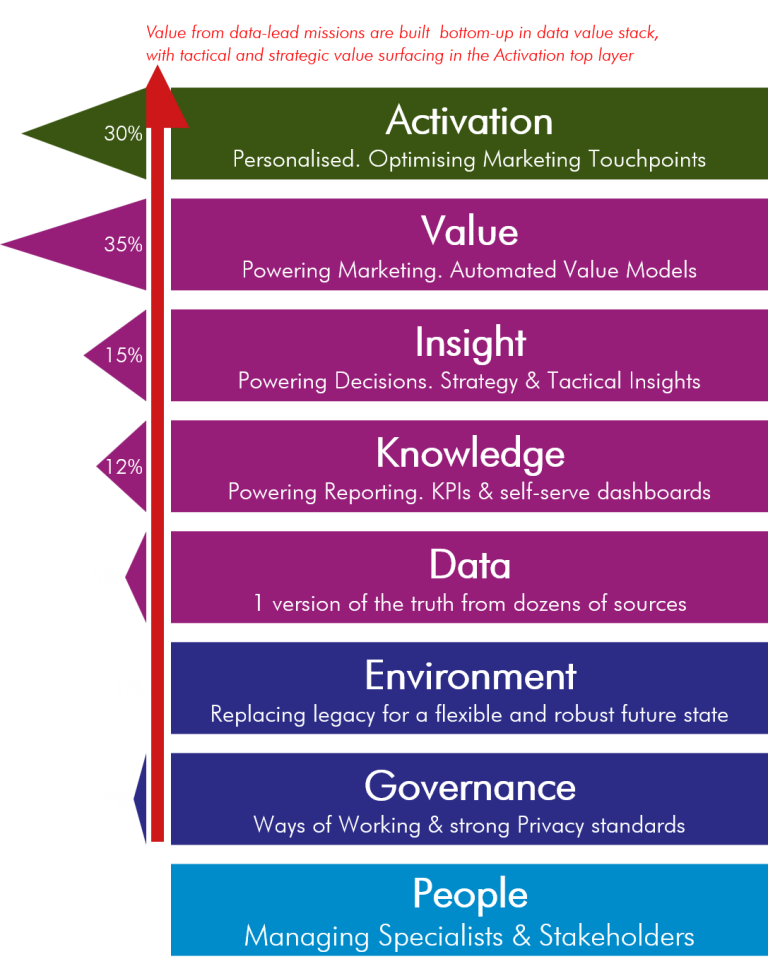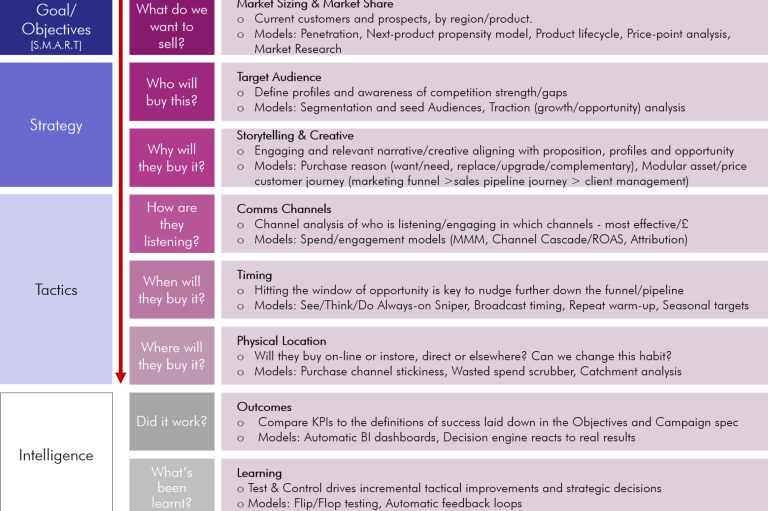Triage your thoughts and needs
Organise thoughts and needs. Write them down. Test them against your objectives. Be consistent. Commit to the process.

Key Questions
Problem awareness is the first stage. It’s usually a mix of what you’re doing and how you’re doing it. Increasing ROI and customer satisfaction should be the motivation. Resolution will take energy and time. You may have to lean into experts and accept expertise you may not know about – cherish these experts as they have hard-won skills and experiences. The answer is never 2-dimensional. Be curious, but you don’t have to know every and you probably won’t want to know the detail of the process, code or math. Your job is to explain your problem well and be consistent. Here’s a few questions that will help triage your thoughts into an ‘exam question’:
What are you trying to solve?
o What is the business problem?
o What do you need to know?
o What would you be able to differently?
o Who will use it?
What would the outputs look like?
o What is the success criteria?
o What KPI will you measure in?
o What is the definition of done?
o Who will judge it?
o How will you test it?
Will you willing to commit to it?
o When do you need it for?
o When will you use it
o Can you afford to do it?
o Can you afford not to do it?
o Who will do it?

Data Value Stack
The Value stack has 8 layers that build up from a solid foundation and releases value of different types and dimensions… as long as they connect properly.
Poor Marketing can limit great opportunities. Opportunities will be stymied by poor relationships with the other departments that sit near each layer, or not having the correct skilled people working on each layer.
In the diagram the numbers on the left suggest the value opportunity to keep or throw away at each level.
"A complex system that works is invariably found to have evolved from a simple system that worked." - Gall's Law
"Every application has an inherent amount of complexity that cannot be removed or hidden. If it's simple, it's always false. If it's not, it's unusable" - Tesler's law of conservation of complexity

6 Dimensions
Another way of understanding any data related business problem is to use the 6 'journalistic questions'. I look at them as dimensions as they can be used to define particular groups of information in such a way that they don't trip each other up. Unlike the way that some statements or KPIs can become confusing when compared as they combined and overlap.
These 6 dimensions can each align to a fundamental marketing 'exam questions' that assist the key decisions, investigations and tests:
o Goal/Objective = What
o Strategy - Who, Why
o Tactics - How, When, Where
There are also 2 bonus learning-loop questions as science should be tested and evolved:
o Intelligence - Did it work? What's been learned?

Crawl > Stand > Walk > Run > Fly
Problems come at different levels of evolution, and maybe the problem is that the evolution isn't happening quick enough or at all!? Be a farmer not a hunter.
o Crawl is too nascent for the time/effort of Marketing Science, but good to think about what's coming next if this 'feasibility' stage works.
o Stand - Setting up for success or not sure what to do or how it all fits together. Do set up good practice that will enable evolution.
o Walk - Overcoming the gaps, friction and mistakes that's robbing the profits or better customer satisfaction.
o Run - Stay ahead of competitors by optimising your customer journey: marketing funnel > sales pipeline > client management.
o Fly is the amazing automation of everything and will lean into MLOps and AI, but there are no shortcuts so lets get through the problem middle section first!

Why do Marketing Science
Marketing is important as its the act or attracting, satisfying and retaining customers. Data Science is great at using statistics and code to cut big data into usable outputs. But both have limitations. Marketing Science is not just 1 thing… it's not just using marketing platforms right, engaging ads, frictionless touchpoints, proper tests to learn from, data science models, decision making strategic insights, useful tactical dashboards, quality customer data capture, enhancing with the right partner data, cloud-based architecture, privacy standard, cost control.... it's all of them lined up right, to funnel customers and prospects into and through your sales pipeline - and learning what worked and why.
We need your consent to load the translations
We use a third-party service to translate the website content that may collect data about your activity. Please review the details in the privacy policy and accept the service to view the translations.
